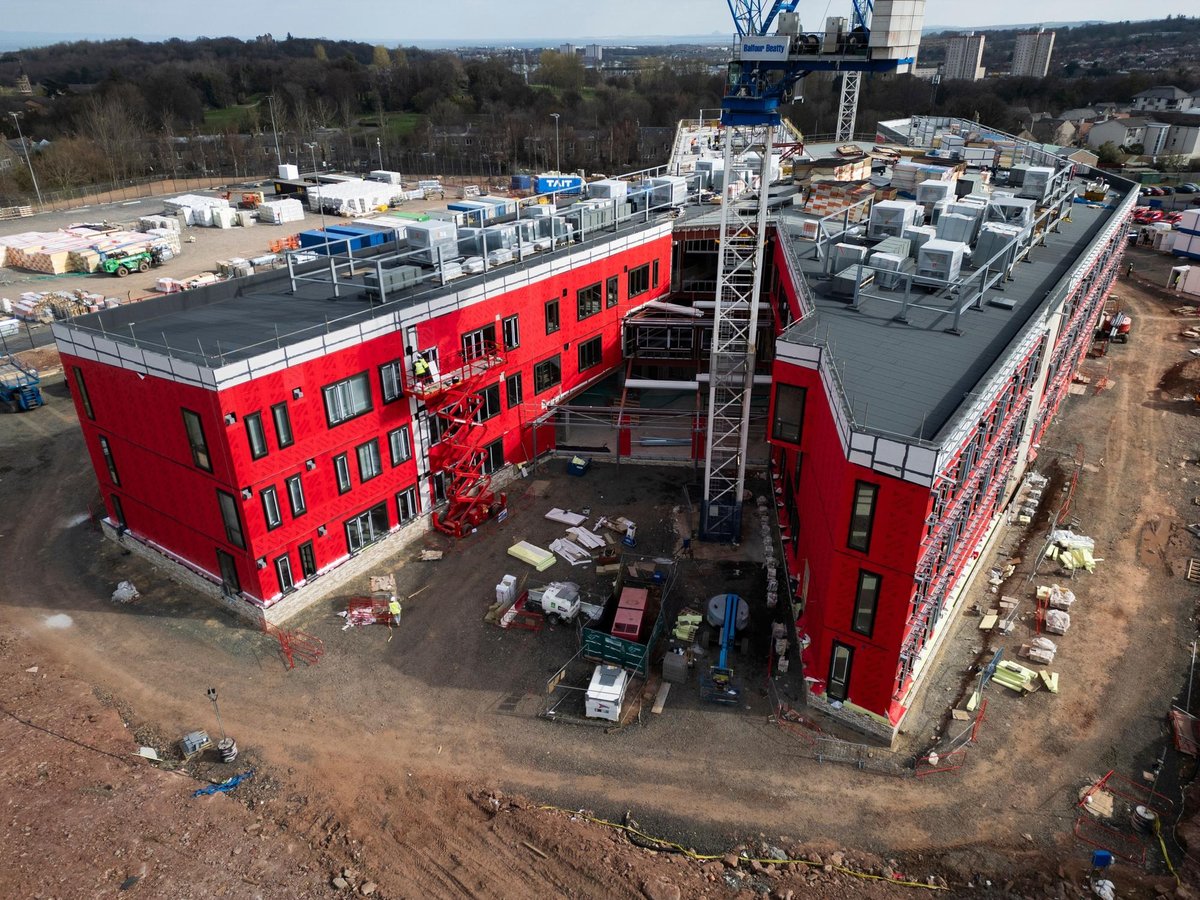By Richard Neville
Copyright scotsman

Wraptite, an air barrier membrane developed by the Proctor Group in Blairgowrie, is playing a pivotal role in helping major new educational facilities meet Passivhaus standard. The Passivhaus standard is an internationally recognised, rigorous energy performance standard for buildings, emphasising ultra-low energy consumption and high comfort levels. Thousands of buildings have been certified to this standard worldwide. The landmark £65 million Currie Community High School in Edinburgh, is nearing completion and on track to become one of the first fully assessed Passivhaus-certified schools in the country. Part of the Scottish Government’s Learning Estate Investment Programme, Currie Community High showcases how innovative material supports energy efficiency, comfort and long-term resilience. “A key element of the Passivhaus standard is airtightness,” explained Cameron Galloway, Site Manager at Kier Construction. “The Proctor Group’s Wraptite membranes were therefore key products for us.” Early testing of the school confirmed airtightness levels of 0.44 air changes per hour (ach), well below the Passivhaus requirement of 0.6 ach. Both Wraptite and Wraptite UV membranes have been used to suit different construction types across the building. Wraptite UV was used to protect the pool hall, offering extended UV resistance and early weather protection, while standard Wraptite was installed across the school’s steel frame areas. Currie Community High School, which will accommodate 1,000 students across three floors, includes a library, sensory garden and public allotments. The swimming pool is set to be one of the first Passivhaus-certified pools in the UK. The overall low-energy performance also supports City of Edinburgh Council’s net zero goals. Beyond the product itself, the Proctor Group’s technical expertise and on-site support have been critical to the project’s success. Regional Sales Manager Linda Kay visited the site throughout construction, providing guidance to both management and installation teams. Wraptite’s self-adhered nature ensured consistent airtightness while saving time, labour, and materials. “Wraptite was straightforward to work with, but the technical support really helped,” Galloway added. “We even created a mini steel frame sample on site to test and refine our airtightness strategy before full installation.” Wraptite is also being used on other major Passivhaus school builds across Scotland, including the £67 million replacement of Liberton High School, also in Edinburgh. Due for completion in 2026, the 13,470m² school will serve 1,200 pupils and includes a library, café, NHS space and flexible community areas. Specialist contractor Linear Projects, responsible for the façade and steel frame system at Liberton, used Wraptite as the external air barrier to simplify airtightness detailing and ensure optimal performance during Scotland’s harsh winter months. Despite challenges such as wind and cold, Wraptite’s robust peel adhesion and vapour permeability ensured strong results from early airtightness testing. “Proctor Group were on hand throughout the project,” said Tom Bailkoski from Linear Projects. “The team visited multiple times, offering detailed advice and helping ensure the product was applied exactly as needed.” Both the Currie and Liberton projects used sample façade test areas early in construction to rehearse and perfect airtightness detailing—a strategy gaining popularity on Passivhaus sites across the UK. Keira Proctor, Managing Director at the Proctor Group, said: “As schools across the UK embrace low-energy standards, we’re pleased that the Wraptite system is a trusted solution for achieving Passivhaus performance at scale. “With Wraptite and Wraptite UV, we offer proven, certified products that deliver both airtightness and vapour permeability. This is something that’s critical for energy-efficient construction that doesn’t compromise building health or long-term durability.”



